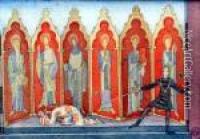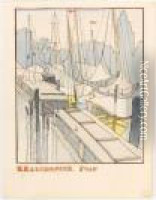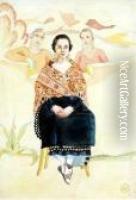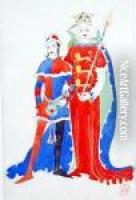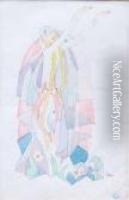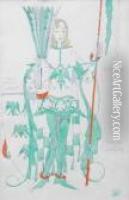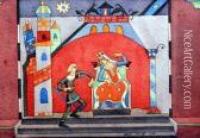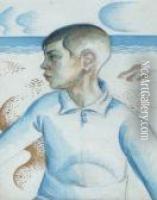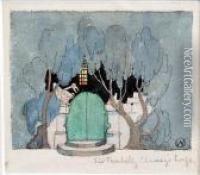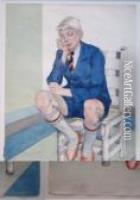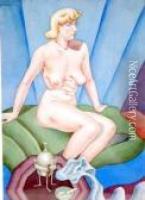Albert Wainwright Paintings
Albert Wainwright was an English artist born in Castleford, Yorkshire, in 1898. He was a contemporary and childhood friend of the more widely known sculptor Henry Moore, with whom he shared early artistic influences and explorations. Wainwright's work is less well-documented and celebrated than Moore's, partly due to his early death and the more private nature of his life and work.
Wainwright showed artistic talent from a young age and was encouraged to pursue his passion. He attended the Castleford Secondary School, where he met Moore, and the two often visited Leeds Art Gallery together. Wainwright later studied at the Leeds School of Art, where he developed his skills in drawing and painting.
His artistic style was varied, encompassing watercolors, illustrations, costume designs, and set designs for theater. He was influenced by the Art Nouveau movement and later by the more modernist approaches of the early 20th century. Wainwright was also known for his illustrations of literary works and his personal diaries, which included vivid sketches and comments on his day-to-day life.
Albert Wainwright's work was not widely recognized during his lifetime, and he earned his living primarily as a teacher. He was a private man, and his sexuality, being a gay man in a period when homosexuality was illegal in the UK, also contributed to his relative obscurity. Despite the challenges he faced, Wainwright remained dedicated to his art until his untimely death in 1943 at the age of 45.
Wainwright's legacy, while not extensive, has been reassessed in recent years, with more attention given to his contribution to early 20th-century British art. His surviving works offer a window into his personal vision and the cultural milieu of his time. They are held in private collections and in the archives of the institutions he was associated with during his lifetime.
